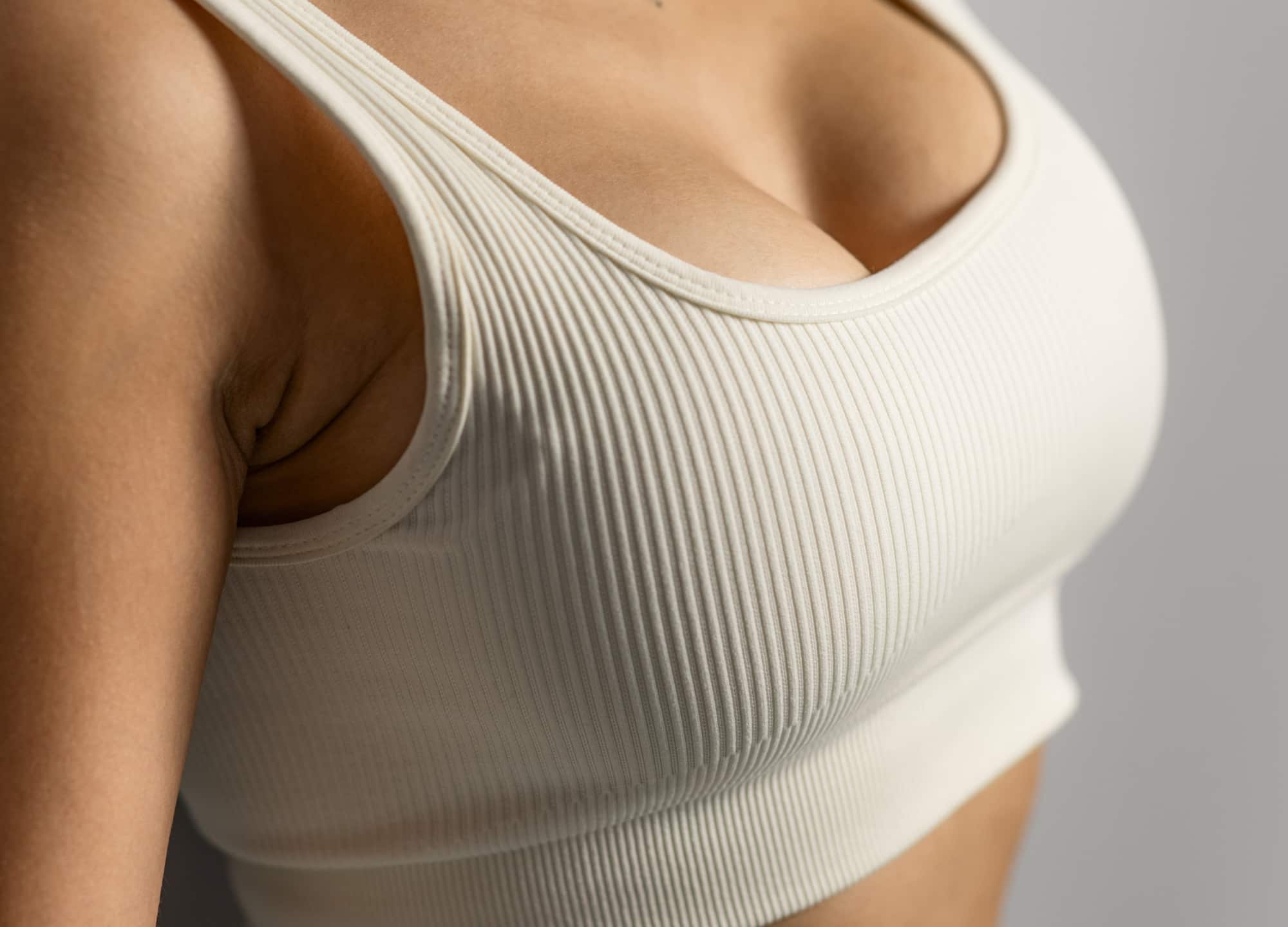Symmastia likely isn’t a word you hear too frequently, but we’re willing to bet you know its much more commonly used moniker: uniboob. In short, it’s a connection between the breasts, resulting in a lack of distinct cleavage and the appearance of, well, one boob. While it is possible to be born with symmastia, it’s an extremely rare birth defect. Rather, it’s much more likely to occur as an issue after a breast surgery. Here, more on what symmastia is, exactly why it happens, and how it can be addressed.
What is symmastia?
Symmastia occurs when the skin on the sternum is lifted up so that you can no longer see a crisp line of definition and demarcation between the breasts, says Dr. Johnny Franco, a board-certified plastic surgeon in Austin, Texas. Again, while there is research indicating that it can be a congenital birth defect, this “natural” type of symmastia is so rare that the doctors we spoke with said they’ve never seen it. Instead, the condition typically happens after either a breast augmentation or a breast reconstruction.
What causes symmastia?
First, an important caveat. All the surgeons we spoke with were quick to underscore that postsurgical symmastia isn’t necessarily indicative of poor surgical technique or that something was done incorrectly. “It’s tough to isolate the cause of symmastia to one thing,” says Dr. Joseph Zakhary, a board-certified plastic surgeon in Phoenix, adding that a combination of factors is usually at play. These factors include things such as an overdissection of the skin, which leads to a tenting of the chest skin and allows the implants to come too close together. Implants that are too big can also potentially lead to symmastia. It’s not necessarily the volume that’s problematic but rather the width of the implant; those that are wider can end up stretching out the implant pockets, pushing them together and erasing cleavage, Dr. Franco explains. He also notes that not following post-augmentation protocol is an issue. “Not wearing a properly supportive bra, resuming physical activity before you’re cleared to do so, or generally putting too much pressure on the implants immediately after surgery while you’re still healing can end up pushing them closer to the midline and increase the risk of symmastia,” he says.
There’s also a good chance of symmastia occurring after post-mastectomy breast reconstruction. The goal during a mastectomy is to remove as much breast tissue as possible, but this in turn means there’s less support for the implants and they’re more likely to get pushed together, Dr. Franco notes.
Are certain people more prone to symmastia than others?
All that being said, there are certain anatomical features that can make people more prone to developing the condition. Having a narrow sternum or pectus excavatum or carinatum (a more depressed or pronounced breastbone, relatively) can set you up for having issues with the central breast borders and put you at increased risk of symmastia, explains Dr. Andrew Trussler, a board-certified plastic surgeon in Austin, Texas.
How do you correct symmastia?
It’s worth noting that symmastia doesn’t show up right away. “It’s important to understand that some swelling along the midline and tenting near your cleavage is common immediately after surgery,” says Dr. Franco. This should dissipate during the immediate healing process; true symmastia will develop over time. Dr. Zakhary likens it to a hernia—something that develops slowly and gradually becomes more noticeable. He adds that it typically starts to show up within a few months as the capsules for the implant form and then start to connect, he says.
However, “once you have symmastia, the only thing you can do is commit to a correction,” says Dr. Trussler. In other words, another surgery is in order. Depending on exactly what’s causing your symmastia, there are a few ways to address it. Dr. Trussler says changing the plane of the implant—going either above the muscle, if it was previously placed submuscularly, or vice versa—can be helpful, as can changing the implant size, shape, or projection. Dr. Franco adds that internal mesh is often used as a way to help re-create and support two separate pockets for the implants.
Above all, managing expectations is paramount. “I tell patients that this type of correction may very well require two surgeries—one to resolve the symmastia followed by a potential second if they’re not happy with their breast size,” says Dr. Zakhary. However, he adds that oftentimes, patients are fully satisfied with how their breasts look after the first procedure (even if they end up with a smaller implant), simply because the symmastia was so problematic in the first place.











